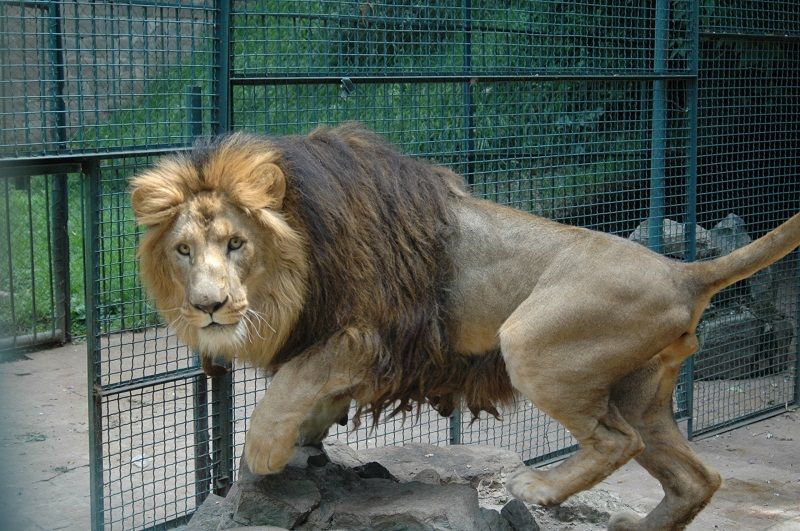Big Manes Make 'Rasta' Lions Special

The Addis Ababa Zoo in Ethiopia is home to the descendants of a collection of lions that belonged to the late emperor Haile Selassie, revered by the Rastafarian movement. Unlike other lions, these big cats have dark manes that extend all the way to their chest and belly. Now researchers say their genes also set them apart.
A group of scientists led by Susann Bruche, of Imperial College London, studied the DNA of eight males and seven females in the zoo. The team found the zoo lions are genetically distinct from all other existing lions. In total, the zoo houses 20 lions that belonged to the collection of Emperor Selassie who founded the zoo in 1948 with seven founding lions (five males and two females); these were said to have been captured in south-western Ethiopia though their geographical origin remains controversial.
The males currently at Addis Ababa Zoo are thought to be the last lions with such thick, dark manes. Wild populations are believed to have vanished due to overhunting for the manes, the researchers said, but some sightings of lions with similar locks have been reported in the east and northeast of Ethiopia. [See Photos of the Unique Lions]
The researchers said field surveys could confirm those reports. More urgently, a captive breeding program at the zoo could ensure that the tiny population doesn't die out.
"A great amount of genetic diversity in lions has most likely already been lost, largely due to human influences," Bruche said in a statement. "Every effort should be made to preserve as much of the lion's genetic heritage as possible. We hope field surveys will identify wild relatives of the unique Addis Ababa Zoo lions in the future, but conserving the captive population is a crucial first step."
The study has been published in the European Journal of Wildlife Research.
Follow LiveScience on Twitter @livescience. We're also on Facebook & Google+.
Sign up for the Live Science daily newsletter now
Get the world’s most fascinating discoveries delivered straight to your inbox.
